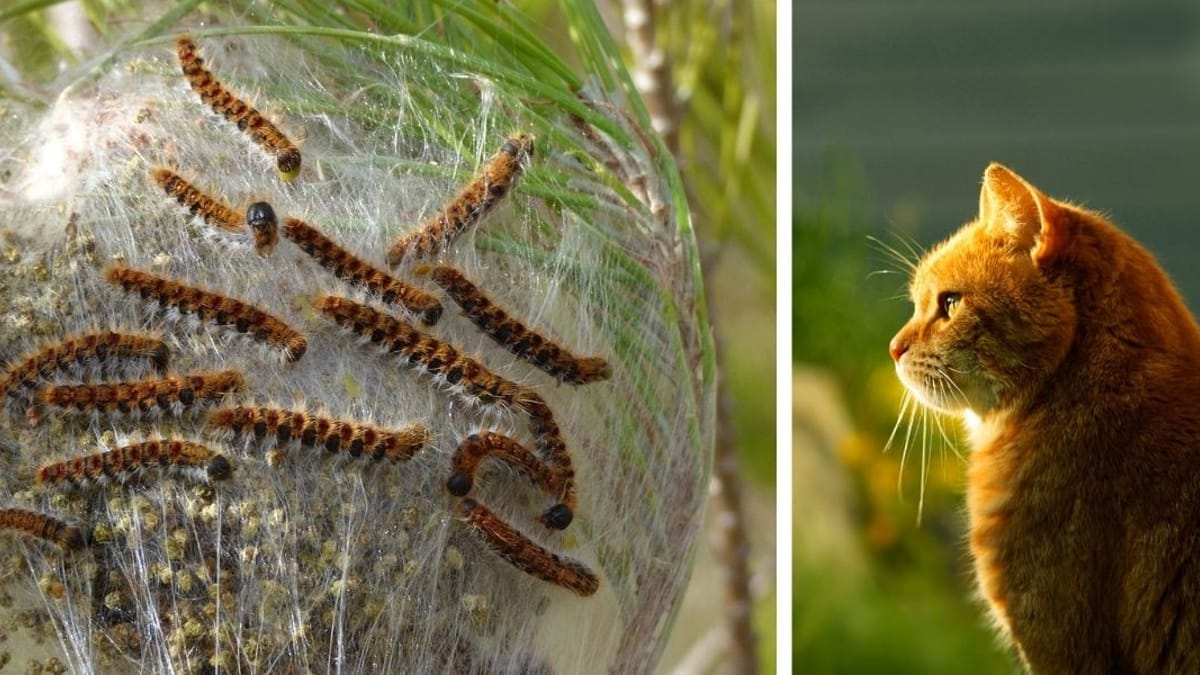Every year, between the spring and summer seasons, the same danger returns: processional caterpillars. The binomial processionary moth and cat it doesn’t get along at all: there are many effects on the health of the processionary on animals, including humans.
This article will spell out the symptoms, effects of processionary moth on cats and how to go about it.
What is the processionary?
The processionary is an “animal” that belongs to the family of lepidottero, the same as butterflies. In nature there are several species belonging to the genus Thaumetopoeia: the most widespread in Italy are:
- Thaumetopoea pityocampa (pine processionary)
- Thaumetopoea processionea (oak processionary)
These two caterpillars live in colonies of hundreds of individuals.
In what period is the processionary dangerous?
The pine processionary moth becomes active in primaverawhile the oak processionary moth comes out of its nest in the summertime.
Such insects they move in procession, hence their name, in single file, for distances that can extend even for tens of meters. And this is where your cat may cross paths with them.
Their life cycles are different, for this reason the treatments to eliminate these annoying insects must be carried out at different times of the year.
They weave their silk nest mainly in conifers, but sometimes settle on other trees, such as deciduous trees.
Effects of the processionary moth on plants and animals
Provided with invisible stinging hairs, it is a highly destructive insect for plants and trees, weakening them.
For humans and animals, contact with a processionary moth can trigger irritations, allergieseven serious, and even necrosis.
What happens if a cat eats a processionary moth or comes into contact with it?
As we have seen, the effects of the processionary moth on cats (or other animals) are remarkable: it is a real emergency! Their stinging hairs are in fact connected to a poison glanda stinging protein called mathetopoeinawhich can also have harmful effects when carried by hairs flying in the wind.
In case of contact with the skin or eyes, or worse, in case of ingestion, there is only one solution: run to the vet.
How to understand if a cat has had contact with a processionary moth?
The most common symptoms of the processionary moth on cats are:
- Lesions on the tongue (vesicles, ulcers or even necrosis);
- Sialorrhea;
- Inflammation;
- Vomit;
- Difficulty breathing;
- Edemas;
- Skin rashes.
What to do in case of contact with a processionary?
In case of a processionary bite, rinse the affected area with water, without rubbing it. But don’t waste time taking your dog or cat from the veterinarian!
Antibiotics, anti-inflammatories, antihistamines, gastric medications and sometimes even surgery: depending on the severity of the situation, different treatments for processionary moths in cats are possible.
How to get rid of the processionary by yourself?
Since it is a very infesting insect, by law the use of chemical substances or natural remedies is required to eradicate the processionary.
In this case, DIY is not recommended and you have to rely on industry specialistsgiven the danger of these insects.
To avoid getting there, it is possible to act preventively, getting rid of these unpleasant caterpillars. It is highly recommended to attack them before they have nested. Do not hesitate to ask your municipality for information.


